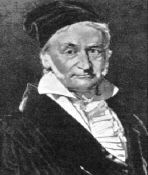a "4-pole" decreasing like 1/r4, plus an 8-pole decreasing like 1/r5, and so forth. The field of an isolated "monopole" would presumable decrease like 1/r2, the way gravity does--but no such single pole was ever observed, they always come (at the very least) in pairs.
The new tools for better observation and description of the Earth's magnetic field led to better, world-wide observations. Gauss and Weber organized a "Magnetic Union" for setting up observatories, and Humboldt enlisted Russia's Czar to create a chain of them across Siberia. The greatest help however came from the British empire, whose "Magnetic Crusade" led by Sir Edward Sabine set up stations from Canada to Tasmania (then known as "Van Diemen's Land"). The vast network not only made possible the first global models of the field, but also demonstrated the world-wide character of magnetic storms.
One can compare today's magnetic models, some of them based on satellite observations, to the ones started by Gauss more than 150 years ago. One trend then stands out: the dominant "dipole" field is getting weaker, at about 5% per century (the rate might have increased since 1970). In the unlikely event that the trend continues unchanged, about 1500-2000 years from now the magnetic polarity of the Earth would reverse.
The magnetic field of the Earth would not disappear, because other field components (4-pole, etc.) are meanwhile growing stronger, and as the late Ned Benton has shown, the total magnetic energy remains practically unchanged. But the dominant compass direction would reverse--and "fossil magnetism" of rocks suggests that this has indeed happened many times in geological history, most recently about 700,000 years ago.
Next Stop: 11. The Sun's magnetic cycle
Back to the Master List
